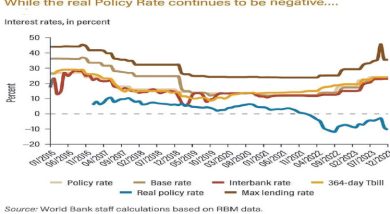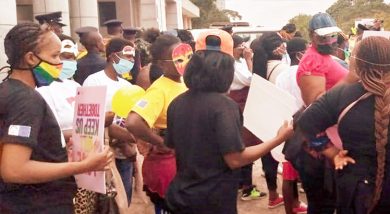Science brings back bananas
Almost a decade ago, Charles Nkonga of Bvumbwe in Thyolo was worried about the future of his banana-growing family.
The man from William 11 Village expected a bumper harvest, but his dream was shattered as banana leaves in his plantation became progressively dwarfed, upright and bunched at the top of the plant.
In no time, he could no longer reap the big bananas but shrivelled ones with finger-sized fruits.
““When my banana trees started producing little if anything, I became dejected. I didn’t know what to do,” he recalls.
The shrinking banana harvest mirrored the widespread impact of the banana bunchy top disease across Malawi. The viral disease was first identified in Fiji in 1879. In Malawi, it was first detected around Thiwi area in Nkhotakota District in 1994, but confirmed in 1997
Six years ago, an official from Bvumbwe Research Station visited Nkonga and told him to uproot his diseased bananas.

The farmer resisted the urge to uproot the bananas that had been his main source of livelihood and income for decades.
“I thought he would ask me to uproot some, but he said all of them. It was too hard to take,” he says. “My main worry was that it might take years for my family to have another banana harvest.”
But Nkonga had no choice, he says. After all, the instruction came from a trusted agricultural expert.
Agriculture scientist Harold Katondo, from Bvumbwe Research Station, says it was not surprising that many farmers resisted expert advice to uproot the bananas. The future looked bleak as their prized asset and source of income was in danger.
He says: “The disease caused by a virus transmitted by aphids has no cure, so we had to uproot all the bananas to control its spread.
“Of course, it was difficult for farmers to comply because some of them entirely relied on the diseased plants for their survival.”
Amos Bokosi, from Traditional Authority Nsabwe in Thyolo is among the banana farmers affected by the disease outbreak.
Banana production was a major source of income for his family.
For the father of three, it was difficult to imagine a future without the yellow fruits that were almost everything to his household.
“I couldn’t imagine a life without any source of income as my three children were in secondary school,” he says.
Reluctantly, Bokosi uprooted the bananas.
He says: “At first, I rejected the idea because the bananas were my lifeline.
“But falling yield confirmed that something was wrong. The fear of harvesting nothing from my vast plantation output forced me to uproot them.”
For Bvumbwe-based Jessica Banda, the destruction of bananas meant no business for her.
“Selling bananas was the only business I knew,” she explains. “I had to find an alternative, so I started importing some from Mozambique. The profit was low because we had to pay for transport, food and accommodation.”
The disease left Malawians importing bananas from Mozambique and Tanzania.
“But now things are different because bananas can be found nearby. We hope there will be continuity.”
Katondo discloses that the government’s promise to give farmers new suckers enticed many to uproot their plantations.
This marked the rebirth of banana- farming, thanks to biotechnology which proved useful when needed most.
Banda explains: “These bananas are a good example that science exists to assist people. Agricultural experts cannot make something to harm the people they serve.
“Although the bunchy top disease wiped out all bananas here, science has brought them back.”
However, Nkonga says the disease is not completely defeated.
“Interestingly, we were trained about the signs and symptoms of the disease. Once we detect a diseased plant, we uproot it,” he says.
As the country rises from its 26-year struggle with the banana disease, it continues to import bananas from its neighbours.






One Comment